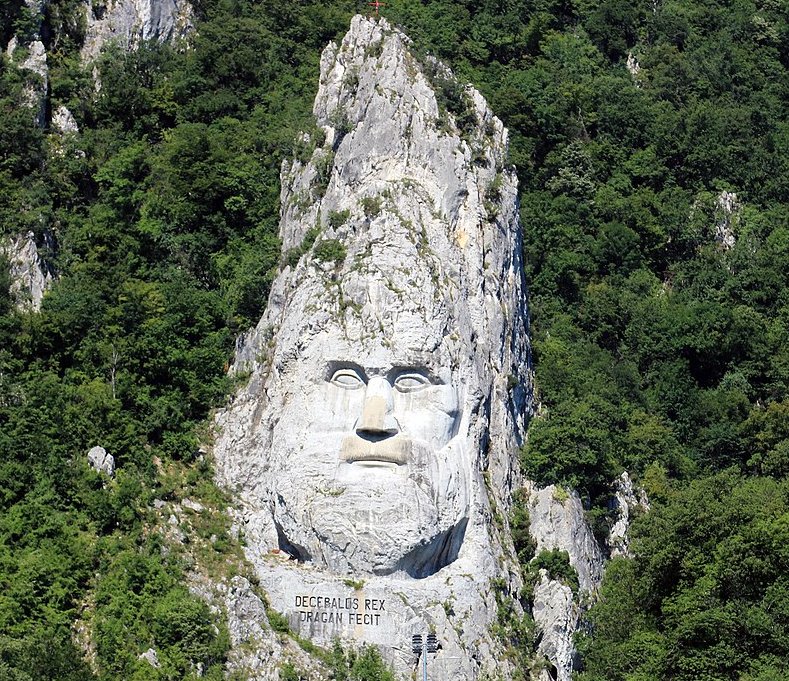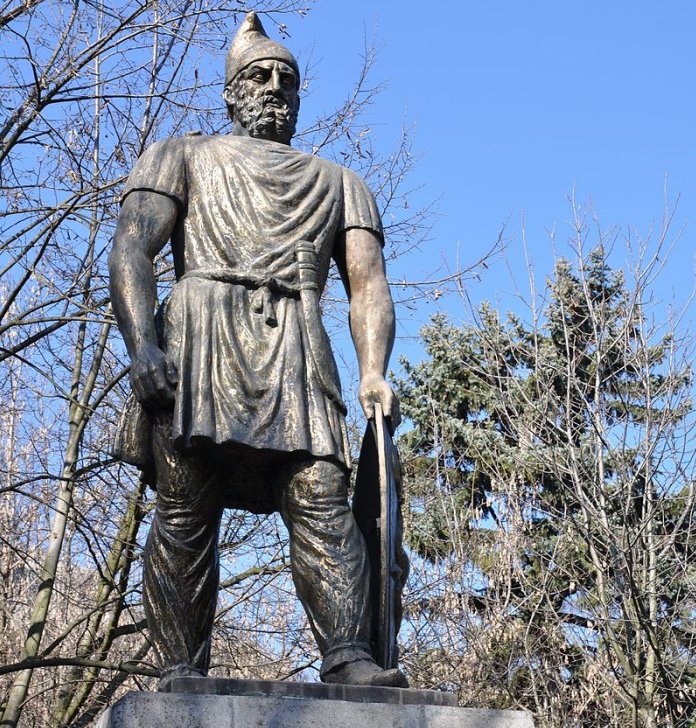Decebalus – The Brave One’ – Last Mighty King Of Dacian People
A. Sutherland - AncientPages.com - Described in numerous literary works, movies, public monuments, and other memorials, Decebalus is considered a national hero in Romania.
At the beginning of the third century, 150 years after the affirmation of Decebalus, Dio Cassius (164-c.235): a Roman senator of Greek descent, historian, and author of 'Roman History' wrote about the mighty king Decebalus as follows:
"He was very skilled in the war and skillful work, knowing how to choose the occasion to attack the enemy and withdraw at a time. Abil in traps was valiant in battle, to use skillfully knowing a victory and finally escaping a defeat for the things he has long been a fierce adversary of the Romans ".
Decebalus (Decebal) - 'the brave one' - was the last king of Dacians, a people who lived in the territory known presently as Romania.
He was also one of the mightiest rulers of this ancient kingdom. He ruled the Dacians 87-106, but the first year of his reign was especially difficult because the Dacian Kingdom crumbled into four or perhaps five principalities and was weak.
After reuniting fragmented Dacian tribes into one nation, he led them in three wars against the Roman Empire and its two emperors, Domitian and Trajan.
He immediately organized an army and attacked the Roman province of Moesia (southeastern Balkans), killing its governor, Oppius Sabinus.
The rock sculpture of Decebalus at the Iron Gates. Image credit: Sadko (made the image in the immediate vicinity of the sculpture) - CC BY-SA 4.0
'During his reign, an accelerated process of the state centralization occurred in the face of the imminent Roman danger. For two decades, the confrontation with the Dacian state constituted the major problem of the Roman foreign policy.'
He fought victoriously against Domitian's general, Cornelius Fuscus. Still, new dangers came, and in 89, Decebalus was eventually defeated and forced to sign a peace treaty that made the Dacian kingdom a client of Rome. According to these terms, the Dacians receive Roman money and technical support in exchange for recognition of Roman overlordship.
During the next 12 years of peace, Decebalus consolidated power and rule.
Decebal (Decebalus) (ruled 87-106) was the last king of Dacia. The Romans defeated the Dacians at Topae, set fire to several towns, and moved towards Sarmizegetusa, the kingdom's capital. The Romans laid siege to the city and cut Sarmizegetusa's water supply.
After almost three years of preparations at the southern boundaries of Dacia, at the beginning of the year 101 in Moesia Superior, Emperor Traian concentrated 13-14 legions and many auxiliary units (circa 150 000 soldiers) to conquer Decebal's reign.
Statue of Decebalus in Deva, Romania. Image credit: Saturnian - CC BY-SA 3.0
In 101, Trajan led an invasion of Dacia, and thus, the First Dacian War began. The capital of Sarmizegethusa (in modern Romania) was captured. In 102, Decebalus was forced to accept Roman occupation garrisons.
In 105, the mighty Decebalus was once powerful enough to defeat the occupation forces and invade Moesia. It was the Second Dacian War.
The Dacians, led by Decebal, resisted heroically. On the other hand, Roman Emperor, Trajan, threw all the Empire's resources into the fight to be victorious. Dacia's gold was essential, but he first wanted to eliminate the threat from the Dacians and their allies at the eastern border.
After Trajan seized Sarmizegethusa a second time in 106 and the Dacians' fortress of the Orastie's Mountains fell, some defenders, including Decebal, managed to leave the city, trying to continue resistance against the Romans within the country. Being chased by the Romanian cavalry, Decebal commits suicide because death is better than falling alive into his enemies' hands.
Dacia capitulated and became a Roman province.
There is a mighty 40-meter-tall bearded stone face overlooking the Danube River in Romania.
It is the statue of the Dacian king Decebalus. From 1994 to 2004, it took ten years for twelve sculptors to finish it. The figure is the tallest rock sculpture in Europe. It is located on the Danube's rocky bank near Orsova, Romania.
Today, 2000 years later, the great Dacian king keeps watch on the borders of those lands he defended.
Written by – A. Sutherland - AncientPages.com Senior Staff Writer
Updated on January 25, 2024
Copyright © AncientPages.com All rights reserved. This material may not be published, broadcast, rewritten or redistributed in whole or part without the express written permission of AncientPages.com
Expand for referencesReferences:
Dando-Collins S. Legions of Rome: The definitive history of every Roman legion
M. Dumitrana, 'Romanian Cultural Identity and Education for Civil Society'
More From Ancient Pages
-
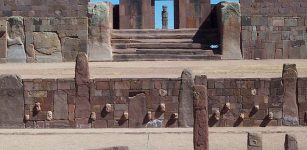 Superfood Of Ancient Andeans Reconstructed – What Helped To Fuel The Tiwanaku Civilization 2,500 Years?
Archaeology | Nov 30, 2021
Superfood Of Ancient Andeans Reconstructed – What Helped To Fuel The Tiwanaku Civilization 2,500 Years?
Archaeology | Nov 30, 2021 -
 Impressive Study Highlights Female-Led Migration Into Bronze Age Orkney And Wins Prestigious Award For 2023
Archaeology | Apr 4, 2023
Impressive Study Highlights Female-Led Migration Into Bronze Age Orkney And Wins Prestigious Award For 2023
Archaeology | Apr 4, 2023 -
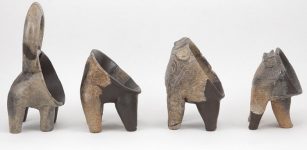 Evidence Of 7,200-Year-Old Cheese Production Found On Dalmatian Coast
Archaeology | Sep 7, 2018
Evidence Of 7,200-Year-Old Cheese Production Found On Dalmatian Coast
Archaeology | Sep 7, 2018 -
 Secrets Of The Assyrian Dream Book And Dream Interpretation In The Ancient Near East
Featured Stories | Aug 6, 2021
Secrets Of The Assyrian Dream Book And Dream Interpretation In The Ancient Near East
Featured Stories | Aug 6, 2021 -
 Neanderthals: How A Carnivore Diet May Have Led To Their Demise
Featured Stories | Nov 7, 2022
Neanderthals: How A Carnivore Diet May Have Led To Their Demise
Featured Stories | Nov 7, 2022 -
 Gengen Wer – Goose God Who Guarded The Celestial Egg Containing The Life Force In Egyptian Beliefs
Featured Stories | Apr 22, 2021
Gengen Wer – Goose God Who Guarded The Celestial Egg Containing The Life Force In Egyptian Beliefs
Featured Stories | Apr 22, 2021 -
 Impressive And Rare Hoard Of Silver Coins Dated To The Hasmonean Period (126 BC) – Studied
Archaeology | Oct 14, 2021
Impressive And Rare Hoard Of Silver Coins Dated To The Hasmonean Period (126 BC) – Studied
Archaeology | Oct 14, 2021 -
 Uruk Prophecy Found In The Ancient Library Of A Magician With Divine Powers
Artifacts | Jul 8, 2019
Uruk Prophecy Found In The Ancient Library Of A Magician With Divine Powers
Artifacts | Jul 8, 2019 -
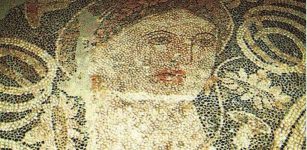 Wax Tablets Reveal Ancient Secrets of The Illyrians
Artifacts | Sep 5, 2015
Wax Tablets Reveal Ancient Secrets of The Illyrians
Artifacts | Sep 5, 2015 -
 Four Roman-Era Brooches And A Ring Found In The Borki Forest, Poland
Archaeology | Mar 15, 2024
Four Roman-Era Brooches And A Ring Found In The Borki Forest, Poland
Archaeology | Mar 15, 2024 -
 LIDAR Will ‘Map’ The Ground Surface To Reveal New Picture Of Ancient Native American Culture
Archaeology | Aug 18, 2023
LIDAR Will ‘Map’ The Ground Surface To Reveal New Picture Of Ancient Native American Culture
Archaeology | Aug 18, 2023 -
 Unusual Discovery Of A Bronze Age Axe In Norway – Is An Unknown 3,000-Year-Old Shipwreck Nearby?
Archaeology | Jul 19, 2024
Unusual Discovery Of A Bronze Age Axe In Norway – Is An Unknown 3,000-Year-Old Shipwreck Nearby?
Archaeology | Jul 19, 2024 -
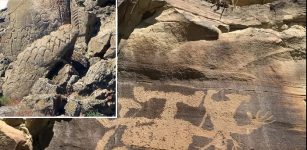 12,000-Year-Old Rock Art In North America – Dating Petroglyphs In The American West
Archaeology | Mar 4, 2022
12,000-Year-Old Rock Art In North America – Dating Petroglyphs In The American West
Archaeology | Mar 4, 2022 -
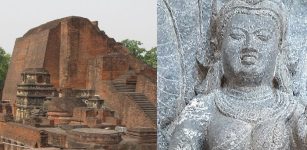 Unique 1,300-Year-Old Pala Period Idol Of Snake Goddess, Nag Devi Discovered Near Nalanda University, India
Archaeology | Apr 5, 2022
Unique 1,300-Year-Old Pala Period Idol Of Snake Goddess, Nag Devi Discovered Near Nalanda University, India
Archaeology | Apr 5, 2022 -
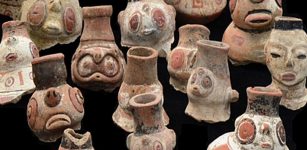 Ancient DNA Tells Story Of Caribbean’s Early Humans
Archaeology | Dec 28, 2020
Ancient DNA Tells Story Of Caribbean’s Early Humans
Archaeology | Dec 28, 2020 -
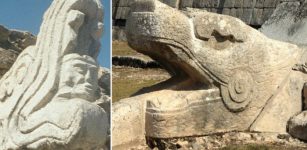 Kukulkan (Quetzalcoatl): Feathered Serpent And Mighty Snake God
Featured Stories | Feb 7, 2017
Kukulkan (Quetzalcoatl): Feathered Serpent And Mighty Snake God
Featured Stories | Feb 7, 2017 -
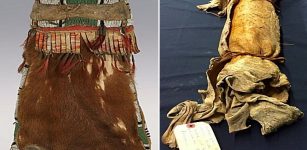 Sacred Medicine Bundle With Relics Of The First Ancestors Or Given By The Gods
Ancient Traditions And Customs | Sep 15, 2016
Sacred Medicine Bundle With Relics Of The First Ancestors Or Given By The Gods
Ancient Traditions And Customs | Sep 15, 2016 -
 Shennong – Chinese ‘King Of Medicines’ Who Invented Farming Tools And Herbs For Treating People’s Diseases
Chinese Mythology | Oct 13, 2021
Shennong – Chinese ‘King Of Medicines’ Who Invented Farming Tools And Herbs For Treating People’s Diseases
Chinese Mythology | Oct 13, 2021 -
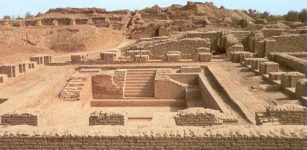 How Did Indus Civilization Manage To Resist Climate Change?
Archaeology | Feb 22, 2017
How Did Indus Civilization Manage To Resist Climate Change?
Archaeology | Feb 22, 2017 -
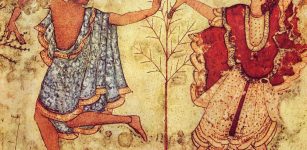 Ancient Dance And Games Offer Glimpses Of Life And Death In Italy 2,500 Years Ago
Archaeology | Mar 24, 2023
Ancient Dance And Games Offer Glimpses Of Life And Death In Italy 2,500 Years Ago
Archaeology | Mar 24, 2023


